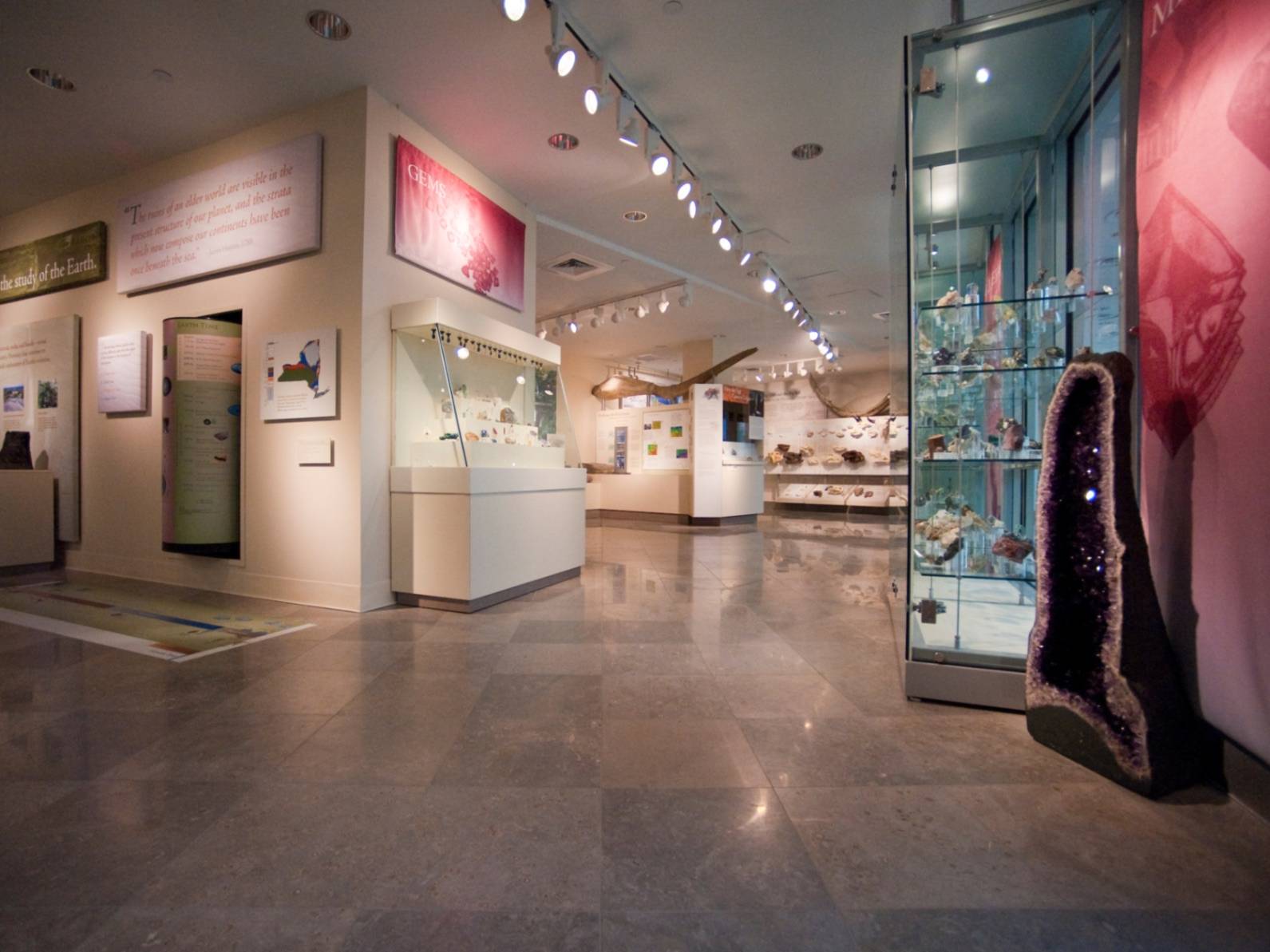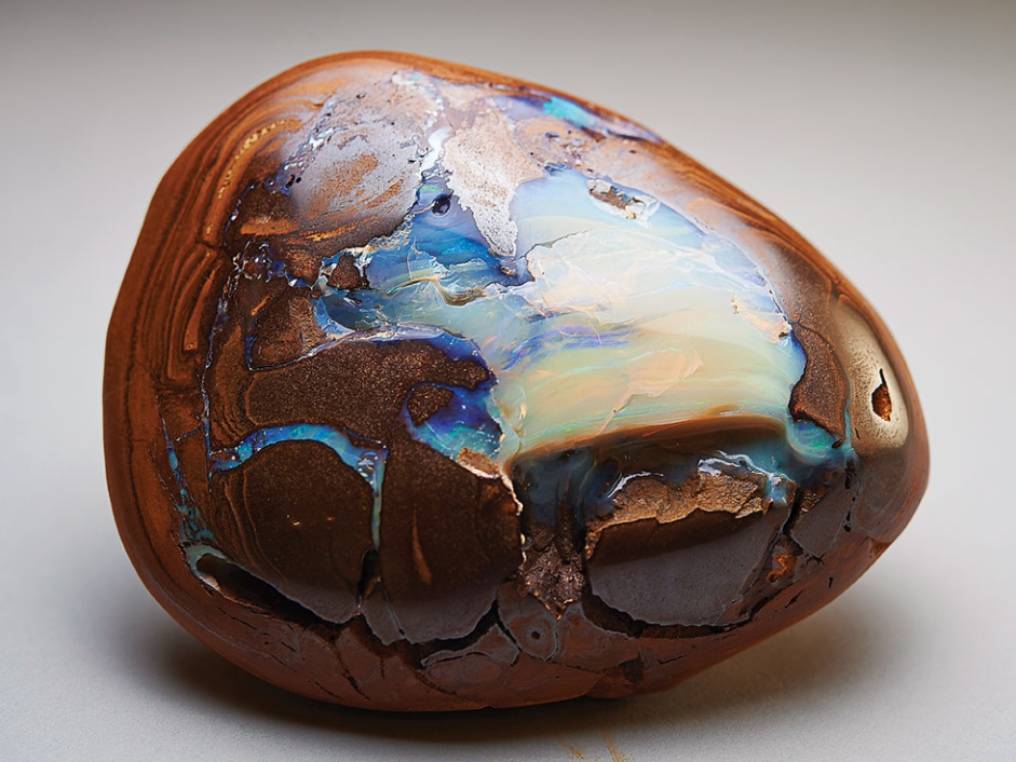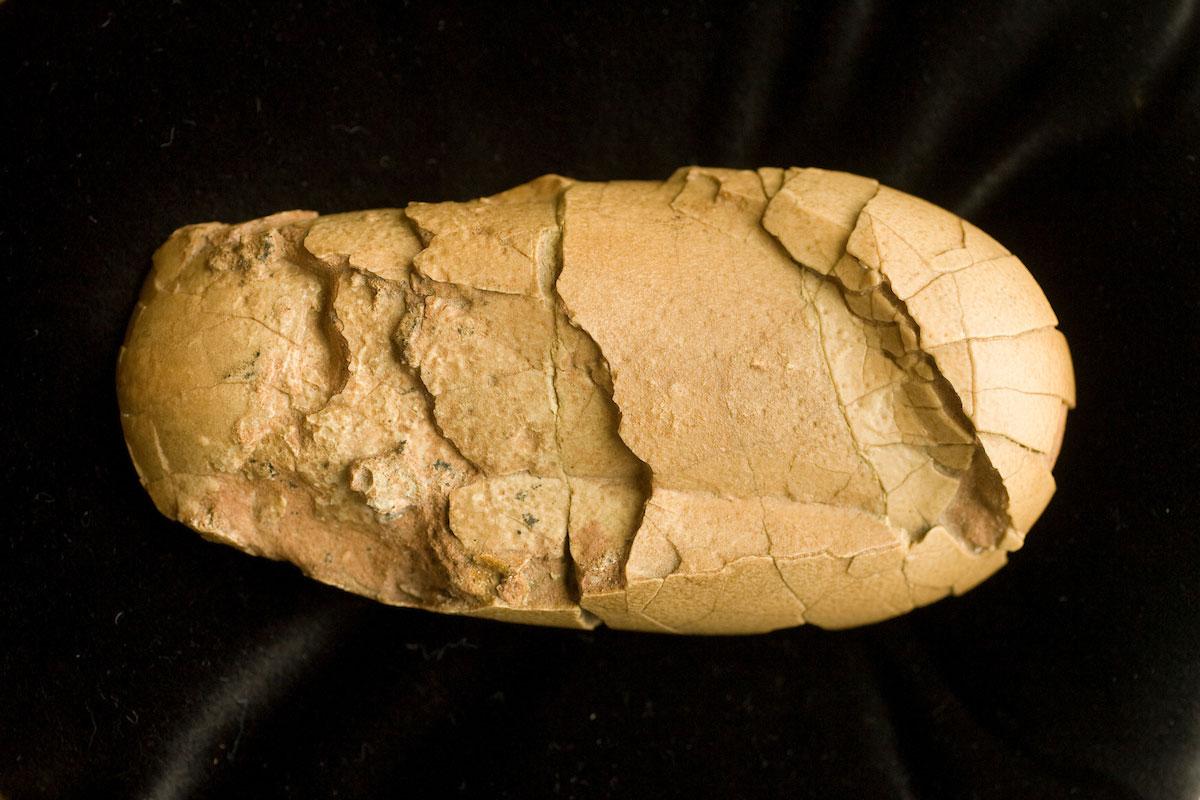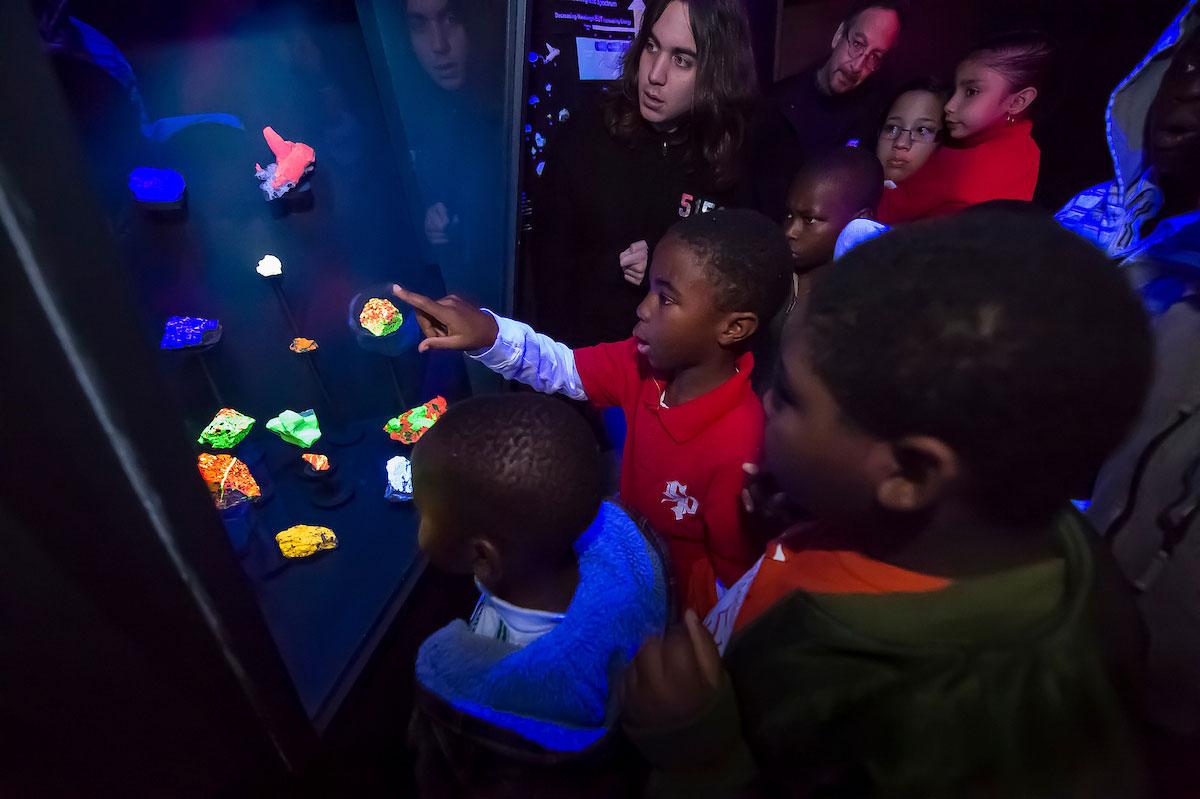
About the Museum
The Robert M. Linsley Geology Museum, located off the atrium in the Robert H.N. Ho Science Center, exhibits minerals, gems, rocks, and fossils, highlighting the beauty and wonder of these objects while also informing visitors about how geologists study the Earth. Threaded throughout the museum are displays focusing on the geology and geologic history of New York State.
Museum Hours
Monday thru Friday: 9:30 a.m. to 4:30 p.m.
Additional open hours occasionally are scheduled to accommodate Ho Tung Visualization Lab visitors, and special weekend hours typically are added for campus events, such as Family Weekend, Graduation, and Reunion.
Email: linsleymuseum@colgate.edu

The Collection
We are fortunate to have many specimens of exceptional quality in the museum, including spectacular gems and mineral clusters, and well-preserved fossils of scorpion-like eurypterids, large dipleura dekayi trilobites, and a 7-foot-long mammoth tusk, to name just a few.
Colgate’s Dinosaur Egg

The most famous fossil in the Linsley Geology Museum is Colgate's oviraptor dinosaur egg, one of the first complete dinosaur eggs ever discovered. The egg is displayed along with its rich history, including not only its origin and discovery but also how it came to Colgate, its many Colgate connections, and its infamous history here at Colgate.
Who Was Robert M. Linsley?
The Robert M. Linsley Geology Museum is dedicated to Professor Linsley, who, from 1955 to 1992, enraptured and inspired Colgate students with his superb teaching and love for geology. A paleontologist, Professor Linsley taught courses on invertebrate fossils, evolution, and the history of life.
Fluorescent Mineral Display

The Department of Earth & Environmental Geosciences also maintains a small but beautiful fluorescent mineral exhibit in the darkened exit corridor off of the Ho Tung Visualization Lab on the fourth floor of the Ho Science Center. This display, a popular stop after vis lab shows, was made possible by two generous gifts to the department: a suite of 70 fluorescent minerals donated by Steven and Matthew Shramko ’13, and funding for the display's construction provided by Rand and Carol April.